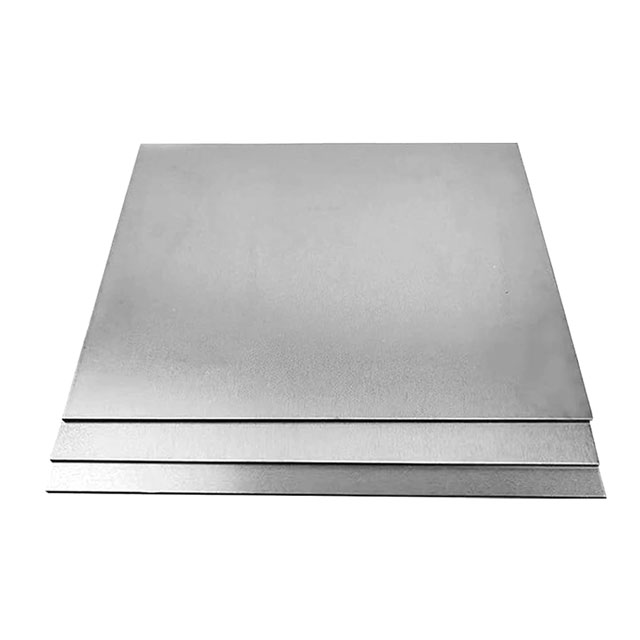Production Process Of Titanium Plate
Time:2020-04-07
View:454
Production Process Of Titanium Plate
The production process of hot and cold rolled titanium plate and strip is adopted. There are two production methods of sheet metal, belt type and block type.
(1) Band method.Is the slab through hot rolling into a roll, in the subsequent cold rolling, heat treatment and other processes are rolled into a roll, rolling to the finished product thickness and state, with the cross shear machine cut into the plate.
(2) Block method.After hot rolling is cut into pieces, in the subsequent cold rolling, heat treatment and other processes are in the way of block production.The strip method has higher productivity and yield than the block method, but the equipment is huge, the investment is high, the production technology is complex, in the conditions and the rolling mill with strip hot mill cooperative production, the use of this process.In the absence of the above conditions, in order to meet the needs of strip production, usually in a single hot mill rolling into thin hot strip.Welded into tape coil, and then in the cold rolling and subsequent processes according to the tape production method.
Heating and hot rolling the slab is heated and rolled on a hot rolling mill to produce hot rolling medium and thick plate products or cold rolling billets.Due to the metal titanium is easy to absorb hydrogen and oxidization in the hot state, which is aggravated with the increase of temperature and the extension of time, the heating temperature of titanium and its alloy slab is generally controlled between 850 ℃ and 1150℃, and the heating time depends on the heating mode and blank size.When the flame furnace is used for heating, the atmosphere in the furnace must be strictly controlled to be micro-oxidation atmosphere.Titanium has good plasticity and small deformation resistance under hot condition, while cold processing is more difficult.Therefore, the total processing rate of hot rolling should be increased as much as possible to reduce the amount of cold processing.When the strip method is adopted for production, thick slab is first rolled through a number of passes on the rolling machine, and then rolled in a hot continuous rolling machine or a rolling mill with an in-furnace coiler to a thickness of 2 ~ 3mm, or rolled from the blank to a thickness of 6 ~ 8mm on a hot rolling machine, and then rolled into a coil or welded into a coil in its tail.When the block method is used, the mill is usually rolled on a single hot mill, sometimes two or three times of heating is required.Hot rolled, Surface treatment, Heating again, Hot rolling cycle to roll to the required thickness.

The surface treatment is to remove the oxidizing inspiratory layer formed on the surface of titanium plate billet in the process of heating, hot rolling and annealing.The main treatment process is alkaline pickling or sandblasting (shot) pickling after two.Alkaline pickling is a process in which the products are first soaked in a molten alkali solution (NaOH) tank containing the oxidant (NaNO3), and then immediately quenched by water after alkaline pickling, and then pickling in a nitric acid solution containing fluoride ions, and then washing and drying.Sand blasting (shot) pickling method is the use of compressed air to sand (iron shot) high speed impact on the working surface to remove the oxide layer, and then pickling, drying.The treatment of waste lye and alkaline waste gas in alkaline washing is complicated and the production cost is high.
Cold rolled pure titanium is usually rolled at room temperature or slightly above room temperature. Some titanium alloys are heated to 100 ~ 200℃ and rolled.Titanium and titanium alloy cold work hardening speed is fast, the total processing rate between two annealing pure titanium is not more than 50%, titanium alloy is not more than 30% ~ 40%, the need for many times of intermediate annealing, many times of cold rolling, to produce thin products.
Annealing includes intermediate annealing and finished annealing.Intermediate annealing is carried out in a non-vacuum annealing furnace. After annealing, pickling is required to remove the surface oxide layer.The annealing of finished products is usually carried out in the vacuum furnace. After annealing, the surface is bright and clean.In order to improve the surface quality of strip after annealing, the strip should be degreased before annealing.
Finishing and inspection according to the delivery conditions of various products, the finishing process includes rolling, straightening and finished product cutting.Inspection items include sampling inspection, appearance quality inspection and dimensional tolerance inspection.



